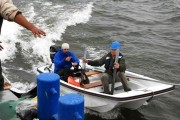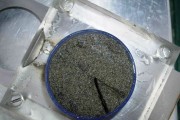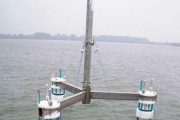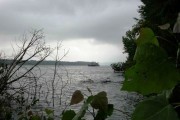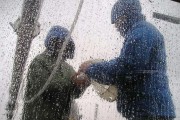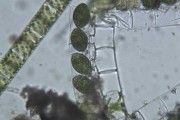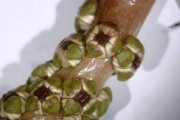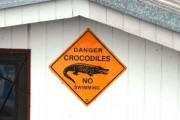
A cold Saturday (Sept. 8) included sampling at Stations 54, 55 and 56, including a site on the Velika Morava River and an evening landing in Kostolac. A large coal-fuelled power plant is located near Kostolac, producing millions of tons of fly ash every year stored in fields close to the Danube bank. A few years back, the dike retaining the ash had broken, releasing it into the river. In response, given the possible risk of continued leaching of pollution, the JDS2, on top of its routine tests, took two ‘core sediment samples' upstream and downstream from the ash fields.
Core sediment sampling, a tricky and expensive business, had originally been planned only for two JDS2 sites, at the reservoirs of the Gabcikovo and Iron Gates dams - given that reservoirs contain the deepest amounts of sediment and core sampling requires at least a half to full meter sample. After sediment cores taken from the river bottom are removed, they will then be sliced up into five cm portions and analyzed for a wide range of pollutants.
Hormone disruptors
The Kostolac core sediment sampling is actually an excellent example of the broader scientific ripples being sent out by the JDS2. While a JDS2 Core Team Member, Austria's Richard Niederreiter, operated the equipment, Serbia's Vesna Micic is studying the area in greater detail as part of her PhD work with a team of University of Vienna scientists led by Professor Thilo Hofmann. The team is studying ‘endocrine disrupters', organic compounds which can significantly impact the hormones of animals such as humans, fish and snails. Two such compounds, nonyl-phenol and octyl-phenol, are part of the EU's list of banned priority substances. "JDS1 found alarming concentrations in Danube sediment," says Hoffman. "We now need the JDS2 to better understand where they are, why they accumulate and how they behave. We would never get the samples without the JDS2." The JDS2 and ICPDR can then in turn benefit from the results that Hofmann's team will later produce, and from having Vesna Micic on-board.
The portions will also go through radioactive ‘isotopic analyses' to determine their ages and thus link them to specific past pollution events. These analyses will be performed by a team from Vienna's BOKU University led by Professor Franz-Josef Maringer. "It would be nice to know the link between pollution concentration and age," says Hofmann.
On Sunday, the ships left Kostolac, continued sampling along the Danube (Stations 57, 58 and 59) and approached the Romanian border. Unfortunately, the JDS2 couldn't enter Romania as planned - darkness had set in and the Argus Captain decided not to compromise the safety of his passengers. The stay in Veliko Gradiste, Serbia, actually turned out to be a super challenge for the team. The Serbian National Team had brought four sets of samples from the Sava River, and three from the Velika Morava River, multiplying the usual number of samples that had to be processed and packed into the JDS2 car for distribution to on-land labs. "Everything was so full," says JDS2 Technical Coordinator Jaroslav Slobodnik. "It was the most samples ever."
On a happy note, Friday included Austrian biologist Martin Dokulil's discovery of filamentous green algae (Spirogyra) in its reproducing stage -- rarely observed in nature. Here, two filaments attach to each other forming a bridge through which genetic material is exchanged, ultimately producing new offspring.












